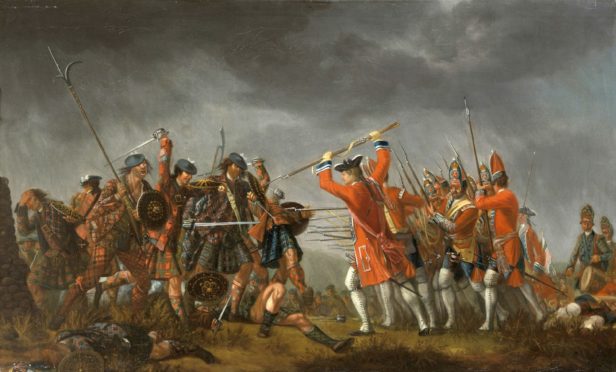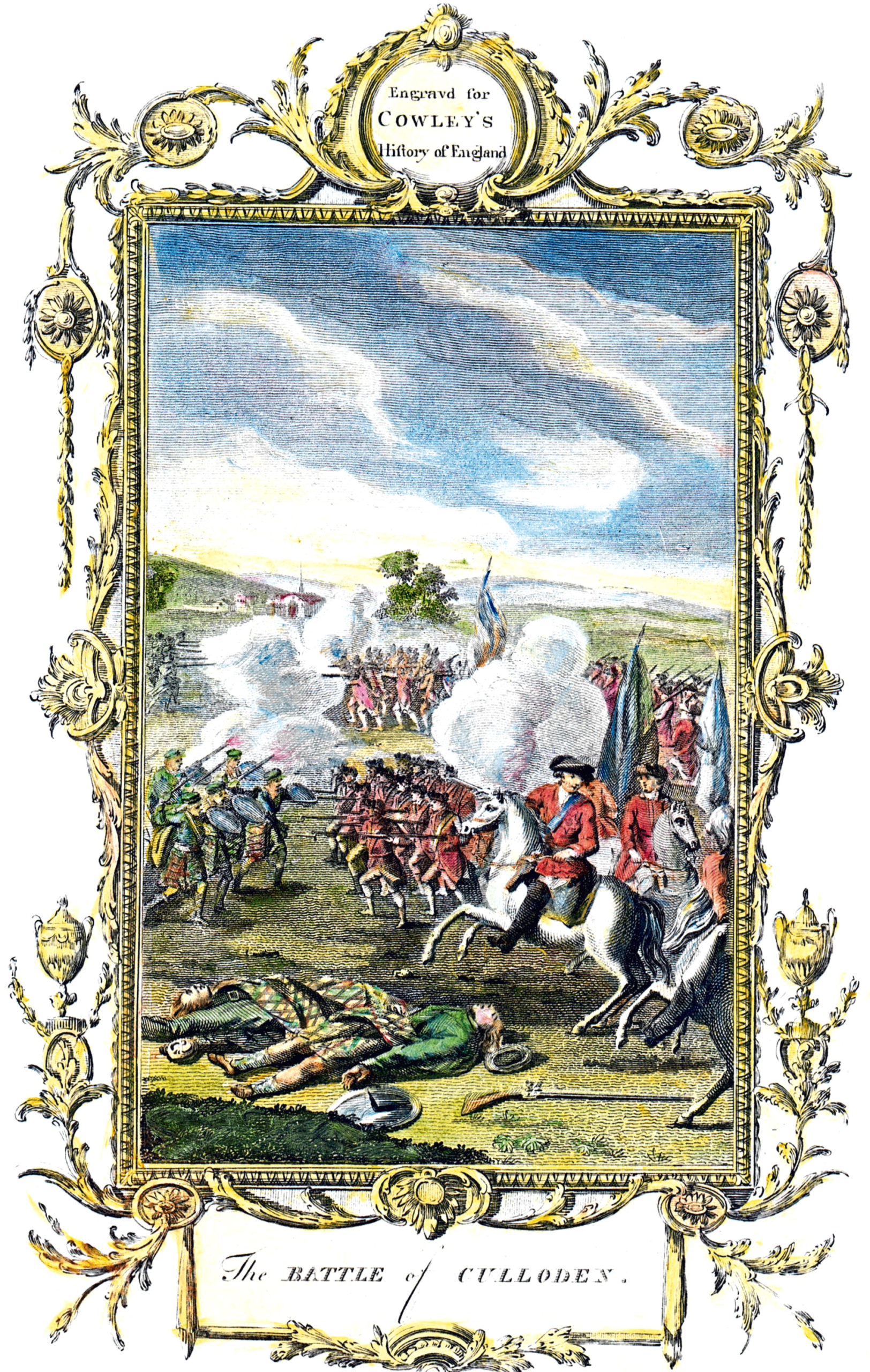
On screen, in class, or between the covers of history books, the story of Culloden, the last and bloodiest battle on British soil, has been told and retold through the centuries.
While there have numerous accounts of the historic clash between Bonnie Prince Charlie’s Jacobite Army and English troops led by the Duke of Cumberland, far less attention has been given to what happened next.
In his new book, Culloden: Battle and Aftermath, Paul O’Keeffe gives equal attention to the battle itself and the events that followed. This includes the fate of Scottish survivors, including some who dragged themselves from the battlefield, or escaped a firing squad.
The author and social historian also shines a light on the impact the decisive battle left on culture, society and communities north and south of the border.
“It seems a likely story for now. I’m not a military historian, so what has always fascinated me is less the battle itself but what happens afterwards. This is usually glossed over at the end of a book, in a short chapter usually titled ‘Aftermath’,” said Paul.
“I’m hopefully finding a new way of telling the story. A lot of my book concerns incidents that might be passed over in a sentence, such as the victimisation and anti-Catholic destruction that went on across Scotland, especially in Aberdeen.”
The battle, which ended “the Forty-five” Jacobite rebellion and its dreams of putting a Stuart on the throne, was an onslaught that saw 1,500 Highland troops massacred by English swords and artillery in just 30 minutes.

A further 3,000 men were captured, facing grim fates as bloody repercussions spread across Scotland at the hands of Cumberland’s men. Paul spent five years meticulously researching the history of Culloden and tracking what happened to the key protagonists and combatants following the clash on Drummossie Moor near Inverness on April 16, 1746.
He scoured historical archives and searched for valuable first-hand accounts, memoirs, autobiographies and additional newspaper and journal reports from the time. Paul, whose previous work explores the aftermath of Waterloo, believes that “when you start putting names to the bodies, to the survivors, and look at what happened afterwards, it humanises Culloden.”
Here, he recounts Culloden’s protagonists and its survivors.
Culloden: Battle and Aftermath by Paul O’Keeffe, Bodley Head
The Prisoners
While Culloden was a bloodbath, the fates of most of the 3,000 people captured after the slaughter was equally brutal. Paul explains: “After the battle there were thousands of Jacobite soldiers, and innocent bystanders, held captive. Many died from typhus while being transported, crammed into the holds of ships lined with rocks, on the way to prison.
“Those tried for high treason, about 120 souls, were hung, drawn and quartered while many others were hanged. They couldn’t all be tried and executed so a lottery system was used, where groups of 20 would draw lots. Whoever lost would stand trial and face execution, although a small number were pardoned, say if a 14-year-old boy had drawn the lot. The others could plea for the King’s mercy.”
The Survivors
Culloden survivor stories are few, as many were rounded up and shot, but Paul did uncover some lucky escapes.
An injured 18-year-old, Captain MacDonald of Bellfinlay, managed to drag himself to safety. “Both his shins had been splintered by a grape shot, so he was left crippled and naked on the field, his clothes stripped from him. The day after the battle, he was crawling across this field of carnage and made it to a main road, where he was nearly crushed by a passing coach. He survived, his wounds eventually knitted together and he evaded capture.”
John Alexander Fraser survived but with lasting injuries. “He was one of the survivors to be rounded up and shot by musket at close range, at a site near the battlefield. The English then finished them off by smashing the butt of their muskets into their heads. Fraser was shot but not fatally, and then had one eye and his nose smashed in by a musket and left for dead. A local man found him and he survived –
half-blind and crippled but he could walk on crutches.”
The Onslaught
Many Scottish towns and villages were targeted following the Battle of Culloden as English resentment over the Jacobite rebellion festered in the following years. “The whole country was essentially under martial law and the army could do what they liked. There were many atrocities, whole communities were burned.”
In the National Library of Scotland, Paul uncovered a detailed inventory listing anti-Catholic destruction by English troops in Aberdeen. “There was an extraordinary case on an anniversary of King George II coming to the throne. The local garrison ordered people to light a candle in their window to celebrate. Of course, nobody did so the English soldiers got drunk and went on a rampage. They smashed windows in over 200 properties and caused massive amounts of damage.”
The Culture War
The historian also considers the cultural responses in England to “this bit of trouble north of the border”, which was addressed across the country’s cultural scene.
Composer George Frideric Handel dedicated his oratorio, Judas Maccabaeus, to the Duke of Cumberland for quelling the Jacobite rising. Paul said: “It is best known for its great choral rendition of ‘See, the conquering hero comes’, and that hero was Cumberland.”
He added: “There was also a pantomime called Harlequin Incendiary which was about Charles Edward Stewart’s arrival in Scotland. It features the Pope, the devil and the mischievous Harlequin stirring up the populace in favour of the Jacobites, and ends up with the Jacobites being tricked.”
The Butcher
The Duke of Cumberland led the English to victory at Culloden by raising his troop’s morale and using new tactics. However, Paul says: “It was his only victory and he fell out of favour with his father, George II, because he lost Hanover, in Germany, where George was born. He spent the rest of his life hunting deer on his estate and was later referred to as ‘Butcher Cumberland’.”
Paul uncovered Cumberland’s original autopsy report in Edinburgh. “He was morbidly obese when he died. They found that his entire diaphragm was forced into his chest cavity by his gut. That would’ve restricted his lungs so he died by oxygen starvation.” Paul added: “Ironically his great-nephew, George IV, legitimised the philabeg (a small kilt) and tartan when he visited Edinburgh in the early 1820s.”
Bonnie Prince Charlie
Charles Edward Stuart survived Culloden but met a sad and lonely end in 1788. “Charles’ entire career and fame were based on 14 months of glory, the rest was failure.
He returned to France to try to muster another army but failed and turned to alcohol. He gradually degenerated over the years until he finally ended up in Rome, dying in a terrible physical condition, covered in ulcers, in the room where he’d been born. ”
Paul added: “He wasn’t an attractive man. He was called ‘Bonnie Prince Charlie’ later in the 19th Century when the Jacobite cause was romanticised.”

Enjoy the convenience of having The Sunday Post delivered as a digital ePaper straight to your smartphone, tablet or computer.
Subscribe for only £5.49 a month and enjoy all the benefits of the printed paper as a digital replica.
Subscribe